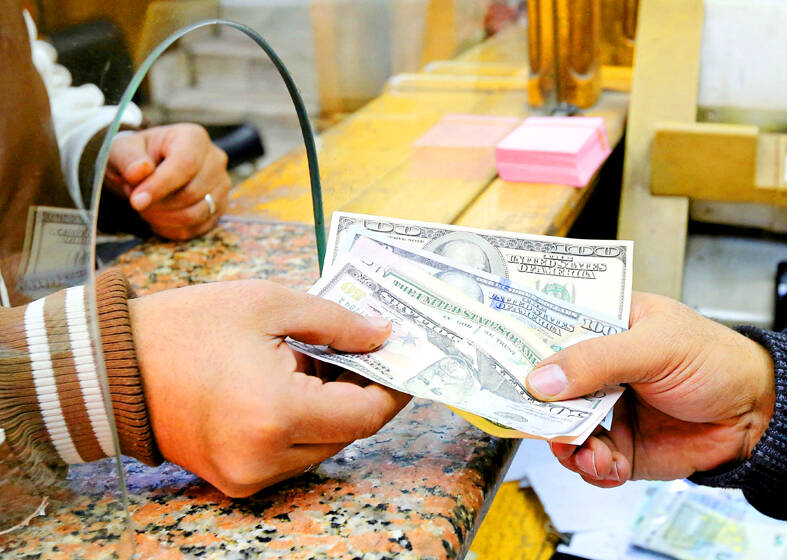
The US dollar fell on Friday, but was still on track for its biggest annual gain since 2015, in the last trading day of a year dominated by US Federal Reserve rate hikes and fears of a sharp slowdown in global growth.
Asian equities had risen earlier in the session after market sentiment on Wall Street on Thursday got a boost from data showing rising US jobless claims, which suggested the Fed’s interest rate hikes were lowering demand for labor.
With liquidity lower due to holidays, the US dollar index was down about 0.3 percent on the day at 103.720.

Photo: REUTERS
The Fed has raised rates by a total of 425 basis points since March last year in an attempt to curb surging inflation.
Against a basket of currencies, the US dollar gained 8.4 percent on average last year, its biggest annual jump in seven years, but it has pared some gains in the past few weeks as investors expected the Fed’s rate-hiking cycle to end this year.
“We’re not yet convinced that the Fed is turning dovish or that the US inflation will come to target for good, so there’s room for the dollar to rebound,” Nordea chief analyst Jan Von Gerich said. “But for the near-term outlook we’re looking for some more performance in the euro versus the dollar.”
On Friday, the euro was up 0.2 percent at US$1.0681, on track for a 6.2 percent annual loss versus the US dollar, compared with last year’s 7 percent drop. A combination of weak eurozone growth, the war in Ukraine and the Fed’s hawkishness put the euro under pressure last year.
European Central Bank executive board member Isabel Schnabel last week said that the central bank must be prepared to raise interest rates further, including by more than what the market expects, if that is needed to bring down inflation.
The New Taiwan dollar rose against the US dollar on Friday, gaining NT$0.024 to close at NT$30.708, up 0.013 percent from NT$30.712 a week earlier.
The British pound on Friday was down 0.1 percent, set for a 11 percent annual drop.
The Australian dollar, seen as a liquid proxy for risk appetite, on Friday was up 0.3 percent at US$0.6796, but on track for a 6.5 percent drop for the whole of last year.
China’s offshore yuan was up about 0.9 percent against the US dollar, with the pair at 6.9085. Still, it was set for an 8.6 percent annual drop, hurt by US dollar strength and a domestic economic slowdown.
Optimism about China’s reopening after three years of strict COVID-19 curbs has been tempered by surging infections which threaten more economic disruptions.
Taiwan, India, Italy, Japan, South Korea and the US are among the countries that have imposed COVID-19 test requirements for travelers from China.
The WHO said it needs more information to assess the latest surge in infections in China.
Von Gerich said China’s reopening “will be a source of volatility.”
“But when we get past that, when we really get to the really positive economic impact, I think it should boost risk appetite globally,” he added.
The US dollar was down about 0.9 percent against the yen, at 131.85.
The Bank of Japan’s dovish stance has seen the US dollar gain 14.5 percent versus the yen last year, in the yen’s worst performance since 2013.
However, the Bank of Japan’s surprise decision to tweak its bond yield control program saw the yen jump to a four-month high against the US dollar early last month.
The Swiss franc was steady versus the US dollar, at SF0.92275.
The Swiss National Bank increased the amount of the Swiss currency it sold in the third quarter of last year, the central bank said on Friday, indicating that its focus has switched from stemming the franc’s strength to fighting inflation.
Additional reporting by staff reporter, with CNA
Comments will be moderated. Keep comments relevant to the article. Remarks containing abusive and obscene language, personal attacks of any kind or promotion will be removed and the user banned. Final decision will be at the discretion of the Taipei Times.



